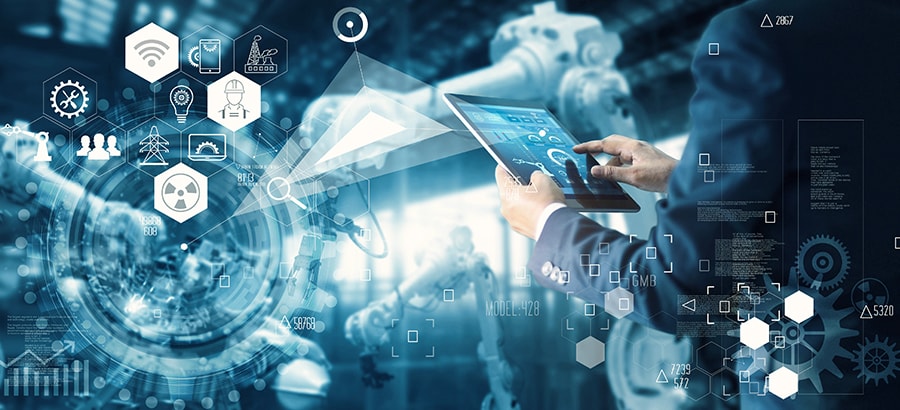There’s no doubt that the global manufacturing industry is evolving at a rapid pace. During SYSPRO’s time exhibiting at MACH 2016, the UK’s largest manufacturing and machine tool trade show, and at our SYSPRO Europe company day, we have been looking closely at the future of the sector with one question in mind – where does ERP fit into the factory of the future?
The future is now
Most manufacturers are aware of the advent of Industry 4.0 in the global manufacturing sector – the dawn of the connected enterprise where cyber physical systems communicate and co-operate with each other and with humans in real time, and through the Internet of Things. This sophisticated level of interconnectivity is helping manufacturing companies realize new business models, yield greater profits and deliver advanced services to their customers. And just as it is revolutionizing the way the manufacturing industry is doing business, it’s also changing the way businesses view ERP.
All smart, connected products share three core elements:
- physical components;
- smart components
- and connectivity components.
In order for these three elements to communicate and operate together, they rely on an advanced technology stack which can facilitate data exchange between a product, a user, external sources and third party applications. At the heart of this technology stack, sits an advanced ERP solution.
Data is transforming the supply chain
The typical manufacturing supply chain is quite linear and consists of research and development, IT, production, distribution, sales and marketing, aftersales, HR, finance etc. However, when aligned to the capabilities of smart, connected devices, this entire value chain is disrupted and transformed. At the heart of this process transformation is data.
How often have manufacturing businesses been advised to store as much data as they possibly can? Everything from design drawings and production data, to machine performance information and financial forecasts are constantly being funneled into a centralized ERP system. But how often is that data extracted, analyzed and used to empower people to make more informed decisions about their business processes, their productivity rates and their business models?
ERP as the game changer
For years, manufacturing businesses have generated masses of data through internal operations and value chain transactions. It gave them some idea of what the customer wants but not necessarily how to deliver on these requirements. By generating data from products as well as interactions and transactions, and channeling all of this through ERP, manufacturing businesses can start to actively adjust their production methods, get more out of capital machinery investment, evolve infrastructure models and reduce time to market.
For example, by installing sensors on a machine tool, measuring performance times and channeling this through a centralized ERP system, you can start to predict failures and downtime. By linking data showing the occurrence of problems to data showing the production environment, you can start to understand how and when your machines are most effective. When you compare this information to the transactional data in your ERP system, to forecast demand and production planning, you can immediately create contingency plans.
At SYSPRO we often talk about the art of the possible. With all the capabilities of modern ERP solutions, these possibilities really do become endless.






